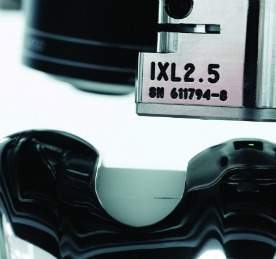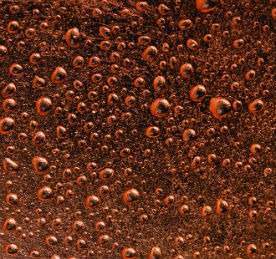
Medical Device Developments: What are the main aims of the centre?
Ceri Williams: The Centre for Innovative Manufacturing in Medical Devices focuses on inspiring excellence across the whole process of developing and creating implantable devices for musculoskeletal applications.
Everything is dictated by clinical need, and clinicians working in the orthopaedic sector must direct the conception and realisation of new implantable implements for hips, knees and spines.
The first approach is functionally stratified design, which means looking at targeting design based upon stratified groups of patient populations to deliver safe, reliable and effective performance in order to avoid the sorts of failures we’ve seen in the past. We’re interested in ensuring that devices are fit for purpose and support an active population, because all of us want to survive and have many healthy years after 50. That’s one part.
The second is a really strong interest in what we call ‘manufacture at the point of need’, or the development of devices that are tailored to individuals. Rather than stratified population grouping, this approach considers aspects such as age, ethnicity and activity levels. All sorts of different factors have an impact on individual groups, including tolerances for particular devices. The personalised route looks at individual requirements and manufacturing techniques that are suitable for bespoke implants.
Techniques such as 3D printing, and other automated manufacturing techniques tailor devices to individuals’ morphologies. Dentistry is currently the most personalised musculoskeletal industry; when you visit a dentist, whether it’s for a crown or a brace, everything is tailored to you, from the size of the hole, to the space created, to the colour, size and fit. This is a really good model upon which we can build upon to show how devices can be placed in a wider musculoskeletal area.
What are the biggest challenges currently faced by medical device manufacturers?
There’s an increasing drive for effective and reliable devices. Every manufacturer wants its devices to be fit for purpose, reliable and able to operate under any sorts of lifestyle or activity, as well as being clinically delivered effectively.
The regulatory pathway is changing. We’ve had a globally harmonised medical devices directive, which has increased the pressure on manufacturers, who must now conform to these regulations for every new product. Costs will probably increase significantly in terms of the preclinical validation manufacturers are going to have to achieve prior to readying products for clinical use. The other area is the increasing cost burden on healthcare systems. Devices must be fit for purpose, but also offer value for money, now that every healthcare system in the world requires an increasing portion of GDP.
Do conventional manufacturing techniques not meet this need?
It’s not that they aren’t up to scratch, but it is an extra burden, so manufacturers want to reduce the costs of materials, manufacturing time and preclinical validation and regulatory approval.
It’s that whole pipeline, or value-chain, for getting a product from concept into approved clinical use, and ensuring that it is fit for purpose and will deliver a quality and effective service.
What techniques are you exploring in the new centre?
In terms of manufacturing at the point of need, or personalised device design and development, we’re looking at novel techniques for individual implants. One really effective method is 3D printing, but we’re also interested in some of the activities around delivering bioactive materials, because one of the key methods is helping tissues heal and repair around the intervention of a medical device, so we’re interested in using materials that help that restoration process. That reduces the time for patients during surgical procedures, and increases their rate of recovery time.
What materials are of interest?
We have a particularly strong focus on what we refer to as ‘biological scaffolds’. One particular process looks at natural biological products that can be used around an implant. Decellularised tissue is one of those routes. We’re really interested in stripping cells and DNA from natural tissues, so they can be implanted to reduce patients’ immune response. This ensures material isn’t rejected, because it contains no cells or DNA, thereby ensuring that functionally and structurally appropriate ligaments, tendons or heart-valves can be used without requiring immunosuppressant drugs. Our research groups are also looking at bioactives, such as glass ceramics and biopolymers. We’re interested in the methods to enhance efficacy of devices, particularly ensuring that we’re using materials that can be approved through the medical device regulatory route, as that is a well-understood pathway.
It’s certainly a lot cheaper and quicker than going down an advanced therapeutic medicinal pathway, which might be something like a cellular therapy approach. You know the time scales and costs associated with doing that, but as soon as you get into what we call ATMP (advanced therapeutic medicinal product) route, the costs are likely to increase significantly, and not many companies have been successful in that area.
What is near-patient manufacturing and how important will it be in the future?
One of the key things we’ve discovered is that there is a critical two-hour period for patients in operating theatres, so we’re interested in creating manufacturing processes that are at the point of need, that is, where the patient is being operated on.
This means you can use rapid prototyping, where an imaging technique can determine an individual’s requirements. In something like paediatrics, where young patients at particular stages of growth might need particular, tailored implants, imaging can establish their particular needs.
Devices can then be rapidly prototyped and successfully implanted, because they have been appropriately moulded to fit within current geometries.
The near-patient approach requires the manufacturing capability to work alongside medical professionals. There’s a whole different series of work on clinical enhancement and ensuring clinical precision and accuracy of delivering medical devices. We’re not about to get into training clinicians, because there are great medical schools around the country that already do that work really well.
Instead, we work with professional bodies and support the work they do, providing support for tailored, manufactured products. The centre has been funded to undertake fundamental, industry-driven research in partnership with companies.
We are investigating novel approaches that haven’t yet been tested or implanted into patients.
What projects are in pipeline?
Six projects are underway, four of which are in functionally stratified design and manufacture. One is hip and knee implants, and another involves decellularised biological scaffolds. We’re also doing some work on collagen scaffolds and bioresorbable multiphasic fixation devices for spinal applications.
Then we have manufacturing at the point of need. There’s an extremely strong focus there for minimally invasive procedures.
We’re looking at minimal invasive implantation of these biologically active materials that help the tissues knit and restore around the implant.
The final one is in-clinic manufacturing of products. This is where we’re looking at new material printing, and moulding, and deposition techniques to support in-clinic manufacturing of bioactive devices, particularly for large defects.






